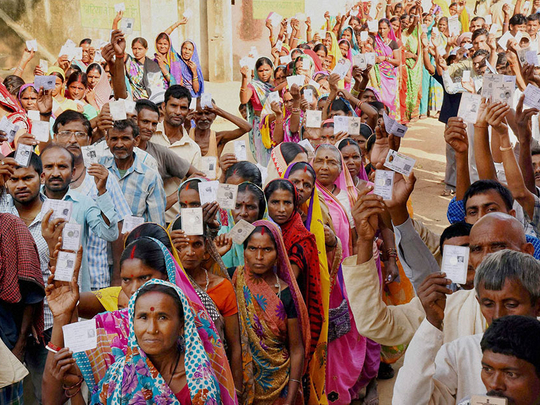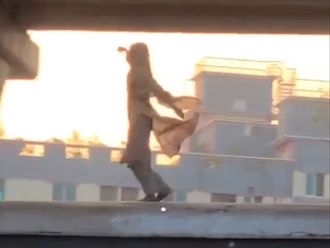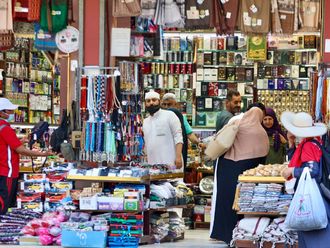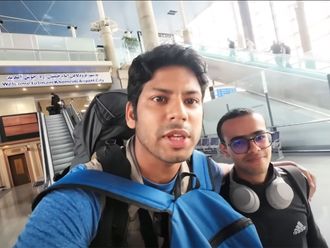
Patna: Political parties in Bihar have gone back to the traditional mode of poll campaigns in the time of COVID-19 as the online campaigns have failed to get support of the masses. The development has alarmed the health experts who fear the actual rallies could see a surge in the cases of COVID-19 in the state.
Until October, all the parties had been carrying out their campaigns through virtual rallies and social media but after announcement of dates for Bihar elections, they have suddenly shifted to actual election rallies in their last ditch attempt to reach out to the voters, virtually throwing the Covid protocols to the winds. However, it is the leaders from the ruling National Democratic Alliance who have scored over their rivals in matters of addressing election rallies on the ground.
In the past few days, scores of NDA leaders, such as Nitish Kumar, Bihar chief minister, JP Nadda, Bhartiya Janata Party (BJP) chief, Devendra Fadnavis, party’s poll in-charge for Bihar, Bhupinder Yadav, Nityanand Rai, Federal minister of state for home and Bihar’s deputy chief minister Sushil Modi have addressed a series of election rallies in various parts of the state while Prime Minister Narendra Modi too is to join the Bihar poll campaign soon.
Reports said the Prime Minister is to address around 12 election rallies over the next four days between October 23 to November 3 in Bihar. In the last 2015 assembly polls, the PM had addressed as many as 26 election rallies but this year, he has not joined the poll campaign so far while his cabinet colleague and federal home minister Amit Shah has addressed only a single virtual rally till date.
Assembly elections
In fact, it was the home minister who had launched the idea of virtual rally in June this year keeping in view the Covid outbreak. In the days to come, other political parties followed suit and began focusing online poll campaigns to connect with the voters. The move amply indicated what is going to happen during the assembly elections in the state in time of COVID-19 pandemic.
In days to come, the Election Commission too recommended such campaigns while restricting the number of audience at the actual election rallies to be addressed by the political parties. The poll body strictly told the political parties how the social distancing norms have to be strictly followed and necessary health items like masks, sanitizers and thermal scanners to be arranged at the rally grounds for the persons attending the rallies.
Initially, the political parties launched extensive campaigns by holding “virtual rallies” through digital platforms but as things stand today, they have once again gone back to the old mode of election campaigns with the digital campaigns failing to leave their impact on the masses.
BJP president JP Nadda was the first leader to launch an actual election rally from Gaya town on October 12. Since then, every party has now focussed their campaigns on actual rallies, rather than “wasting their time and energy” on holding virtual rallies.
Reports said the parties were compelled to shift to “actual rallies” from “virtual” for two reasons. First, their messages were not reaching out to the traditional voters, totally uncomfortable with smartphones and technology, and secondly, the general voters were not taking seriously the poll campaigns being launched through social media which have lost much of their credibility for supplying “fake news”.
Refusing to believe facts
“Social media has lost much of its credibility now and hence none believes the contents in circulation. The situation is such that the people are refusing to believe even the facts,” commented Rajiv Kumar, state coordinator for Association for Democratic Reforms.
Another problem for the political parties was that a huge percentage of the state population didn’t have smart phones or phones with internet connection. This was preventing their messages reaching everyone in the state. A latest research by the McKinsey & Company’s office in India and the McKinsey Global Institute too presents a horrible picture of the existing internet scenario in Bihar.
According to a latest research titled “Digital India: Technology to transform a connected nation”, digital penetration and the GDP per capita are strongly correlated. “States on the top third of GDP per capita levels, such as Haryana, Maharashtra and Tamil Nadu together with small, highly urbanised states and union territories of Chandigarh, Delhi and Goa, have the highest internet penetration, ranging between 28 per cent in Uttarakhand to more than 170 per cent in Delhi,” says the report. The States in the bottom third of the GDP per capita, such as Bihar, Jharkhand, Madhya Pradesh and Uttar Pradesh are among the states with the lowest penetration rate-22 per cent in Bihar and equal in Jharkhand, reveals the report published in March last year. The report amply explains 78 per cent people in Bihar still have no access to internet facilities.
A latest study conducted by the Chandragupta Institute of Management, Patna too states that till last year, only 24.5 per cent of voters were using the internet on a daily basis while the percentage of people using the internet once in a week was only 4.5 percent. Apparently, all these factors prompted the political parties to switch over the traditional mode of poll campaigns.








